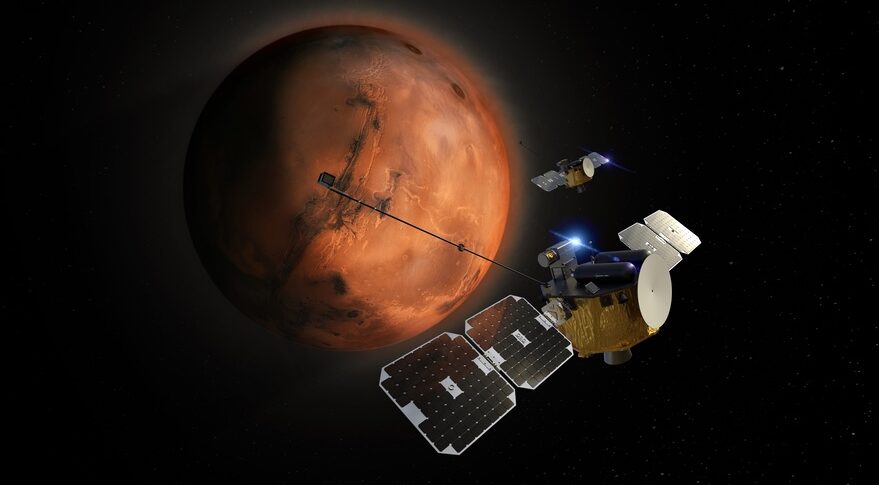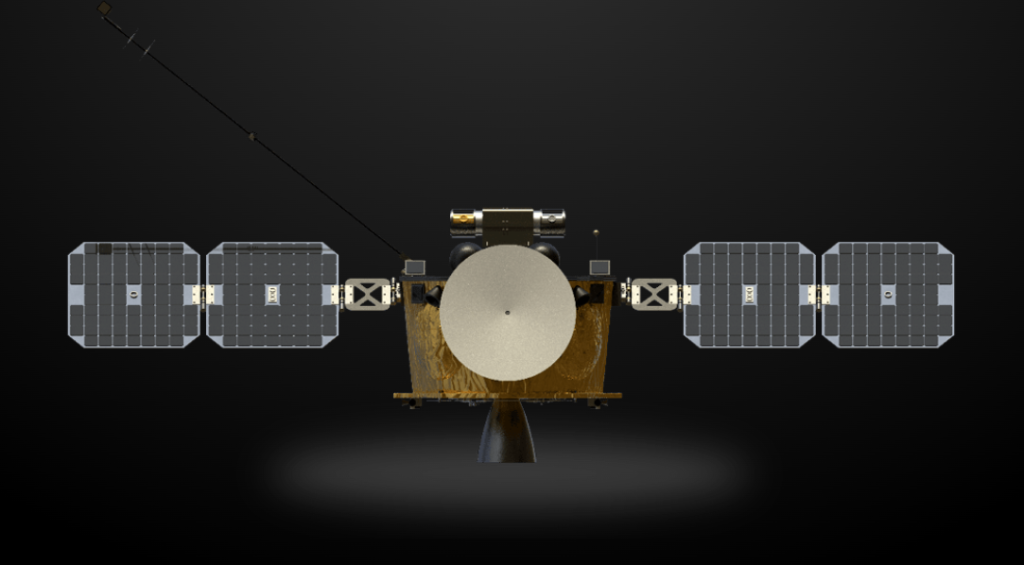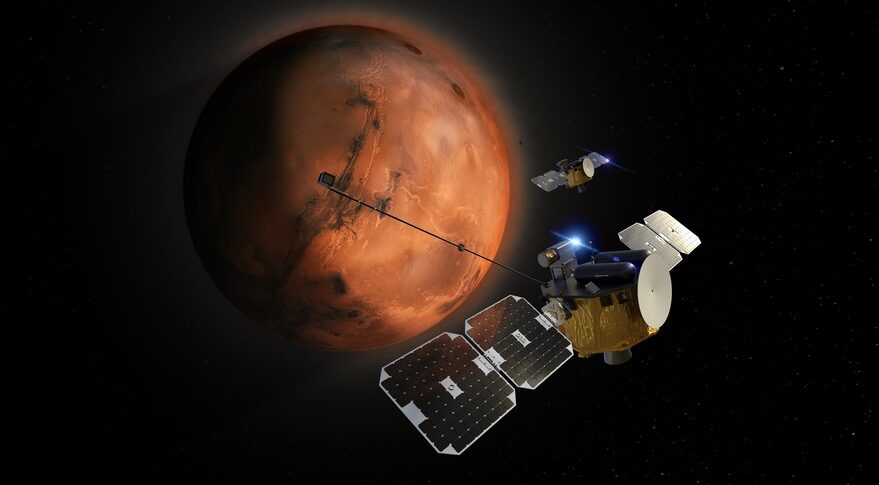
Rocket Lab’s Upcoming Mission To Mars
Rocket Lab has managed to become a very prominent company within the space industry. Thanks to their continued ambitious ideas and fast pace, Rocket Lab has continued to consistently launch Electron successfully. Not only this but they are developing next-generation launch vehicles such as Neutron and acquiring a host of different companies. Now, they are even working on missions to different planets.
Months ago in August of 2021, Rocket Lab announced it will begin final mission preparations for a mission to Mars. Specifically, they mentioned they began the final mission design and commence manufacturing of two interplanetary Photon spacecraft for a science mission to Mars. This is a big step for Rocket Lab and could prove the capabilities of their rocket components among other things.
We recently heard about Rocket Lab and their mission to the Moon, but Mars is even more ambitious. Combine this with the unique capabilities of Photon, and you have a spectacle within the space industry. A few hundred million miles away Mars is an incredibly difficult planet to reach that few agencies have done around the world. Not to mention Rocket Lab is aiming to do it at a fraction of the cost of typical missions.
Mission To Mars

On August 23rd, 2021, Rocket Lab announced they were making good progress on a future mission to Mars. Here they would deliver Decadal-class science at a fraction of the cost of typical planetary missions. The Escape and Plasma Acceleration and Dynamics Explorers, or (ESCAPADE) mission, will orbit two Rocket Lab-built Photon spacecraft around Mars to understand the structure, composition, variability, and dynamics of Mars’ unique hybrid magnetosphere. The mission will also support crewed exploration programs like Artemis through improved solar storm prediction. Rocket Lab Photon is practically a third stage for the Electron launch vehicle. Specifically, Photon is an integrated launch and satellite solution. Photon flies as the upper stage of Electron, eliminating the parasitic mass of deployed spacecraft and enabling full utilization of the fairing. It’s configurable for a range of missions in LEO, MEO, GEO, and beyond, including lunar and in this case, planetary. In addition, the Photon small spacecraft is based on the heritage Electron launch vehicle Kick Stage, leveraging numerous components that have significant flight heritage, including the Curie engine, an in-house designed and developed in-space propulsion system. As a configurable platform, Photon can be tailored to meet unique mission requirements. From mass manufacture as a streamlined constellation offering, to a single customized technology demonstration spacecraft, Photon can easily be adapted to make any mission possible.
ESCAPADE is the latest of only three missions proceeding under the current round of NASA’s Small Innovative Missions for Planetary Exploration, (SIMPLEX), program to conduct compelling planetary space science with small satellites and provide more opportunities for flight experience to the science community. The ESCAPADE mission, led by principal investigator Robert Lillis at the University of California, Berkeley, is the latest SIMPLEX mission to pass Key Decision Point-C (KDP-C), confirming it for implementation in preparation for launch to Mars in 2024. The ESCAPADE mission is managed by the NASA Science Mission Directorate’s Heliophysics Division and will be the first Heliophysics mission to visit another planet. While Rocket Lab has quite a lot of experience, this mission is very unique for the company and its rocket components. Following deployment from a NASA-provided commercial launch vehicle, the pair of Photons will conduct an 11-month interplanetary cruise before inserting themselves into elliptical orbits around Mars to begin the science phase.
Both Photons incorporate satellite subsystems developed and manufactured by Rocket Lab, including star trackers, reaction wheels, ranging transceivers for deep space navigation, and in-space propulsion systems. By leveraging vertically-integrated spacecraft manufacturing, the ESCAPADE mission will be delivered at a fraction of the cost of traditional planetary missions. This supports U.S. national strategy for Decadal-class science by increasing the pace of scientific discovery and enabling more sustainable crewed exploration by improving our understanding of the space environment. Looking at Rocket Lab’s extensive list of acquisitions over the past few years, you can see the benefit they provide for many different missions including this one. This mission has been in the works for quite a while now. On June 15th, 2021, Rocket Lab tweeted “Photon is going to Mars! Two Photons to be exact. We’ve been awarded a contract by @UCBerkeley to design two Photon spacecraft for @NASA’s ESCAPADE mission to Mars.” Since then Rocket Lab along with the other parties involved has been hard at work preparing for the upcoming mission to the red planet. Specifically, this mission, led by Rob Lillis at UCBSSL, consists of a twin-spacecraft science operation that will orbit two spacecraft around Mars to understand the structure, composition, variability, and dynamics of Mars’ unique hybrid magnetosphere.
The mission will leverage its unique dual viewpoint on the Mars environment to explore how the solar wind strips atmosphere away from Mars to better understand how its climate has changed over time. In addition to Rocket Lab’s reaction, Rocket Lab’s founder and CEO, Peter Beck, says “ESCAPADE is an innovative mission that demonstrates that advanced interplanetary science is now within reach for a fraction of traditional costs, and we’re proud to make it possible with Photon,” he said. “Passing the Key Decision Point is a critical milestone in ESCAPADE’s development and is a testament to the world-class science and engineering work of the UC Berkeley and Rocket Lab teams. We are delighted to receive the green light from NASA to proceed to flight.” While this is a very challenging and unique mission, Rocket Lab along with CEO Peter Beck are very excited for the mission ahead. ESCAPADE is one of several missions beyond Earth orbit currently under development by Rocket Lab using the Photon spacecraft, including the CAPSTONE mission to the Moon in support of NASA’s Artemis program and Rocket Lab’s own privately-funded science mission to Venus. Not only this, but Rocket Lab has already established different configurations for each of these missions. The Mars variant features large solar panels that extend out from the third stage to help provide power during the mission. As for the mission to the Moon, it features a much more compact design with smaller solar panels and a pillar towards the center of the structure. Finally the mission to Venus, which features the smallest of the three missions with compact solar panels and more. As time goes on, Rocket Lab and its equipment get more and more experience which they can apply to future missions and goals.
Conclusion
Rocket Lab is becoming much more than a company sending small payloads to low Earth orbit. While Electron is a small-lift launch vehicle, it has made great progress along with the fact that Rocket Lab is working on more ambitious ideas for the future. This not only includes Neutron, but using components such as Photon for unique missions with other companies and agencies. Not long ago Rocket Lab announced an upcoming mission to Mars. Here two Photon spacecraft will launch atop a NASA-provided commercial launch vehicle and head to the red planet. This is expected to be a challenging mission and stand out in Rocket Lab’s achievements. We will have to wait and see how the mission develops and the impact it has on the space industry.
